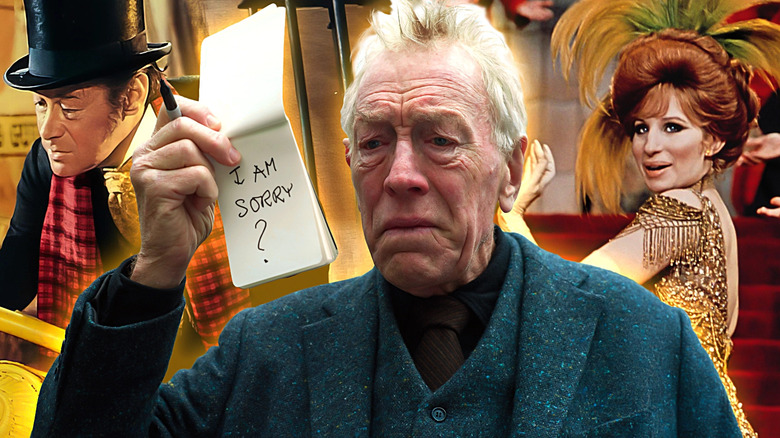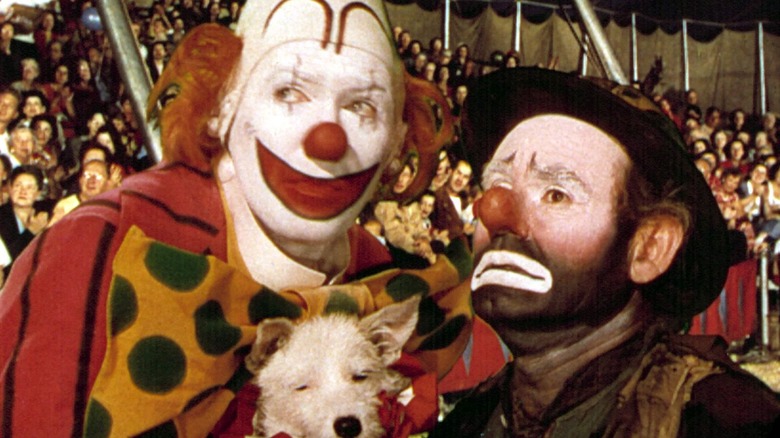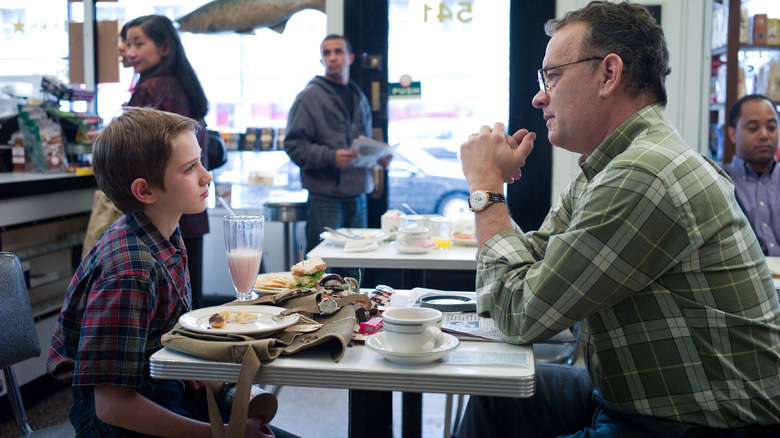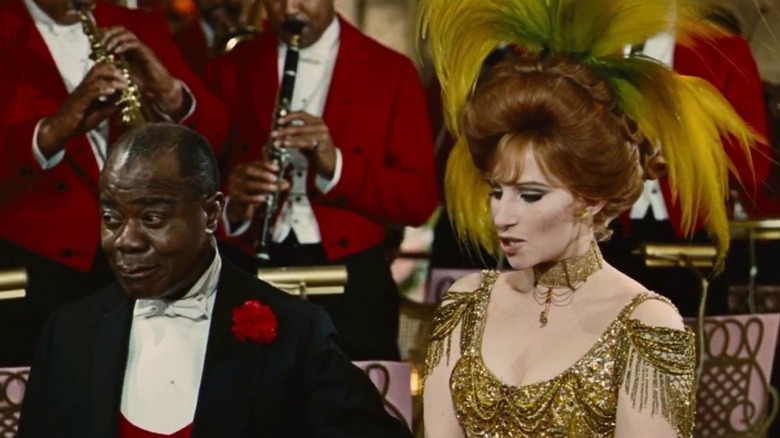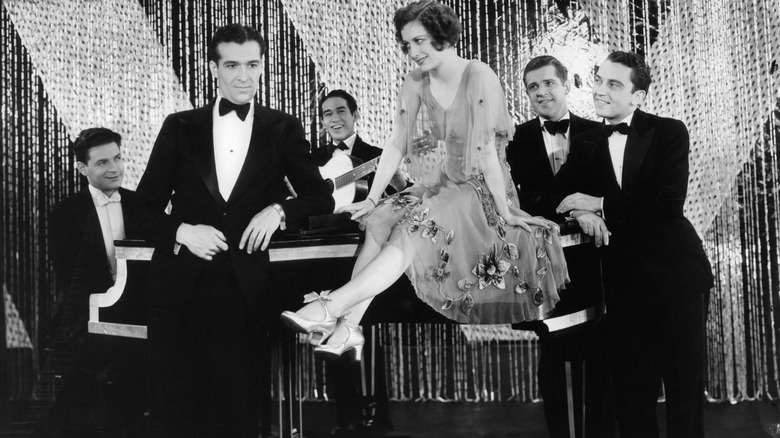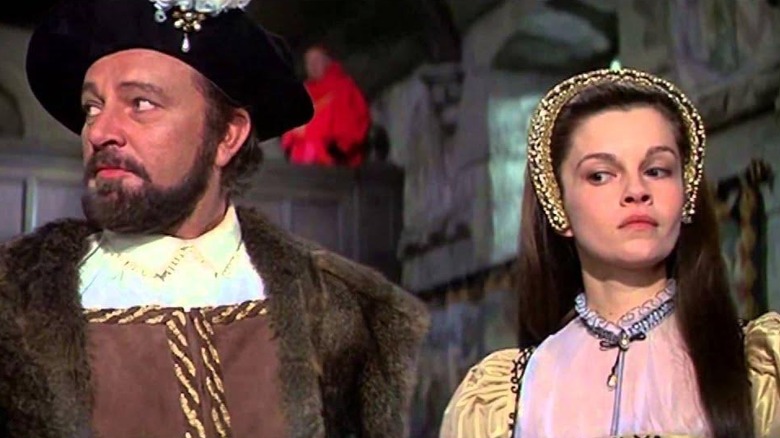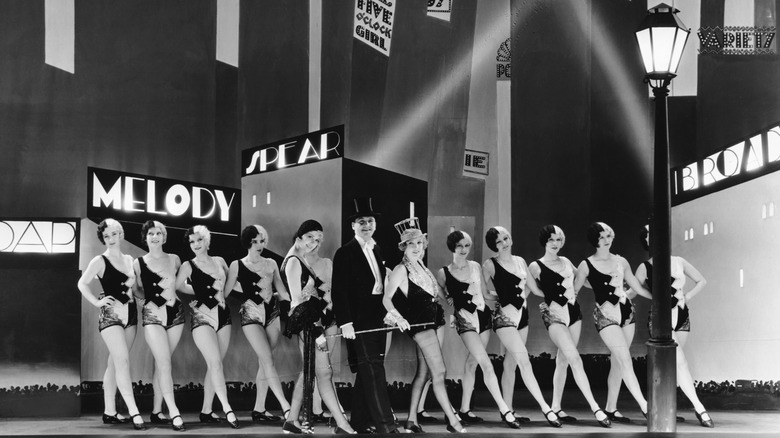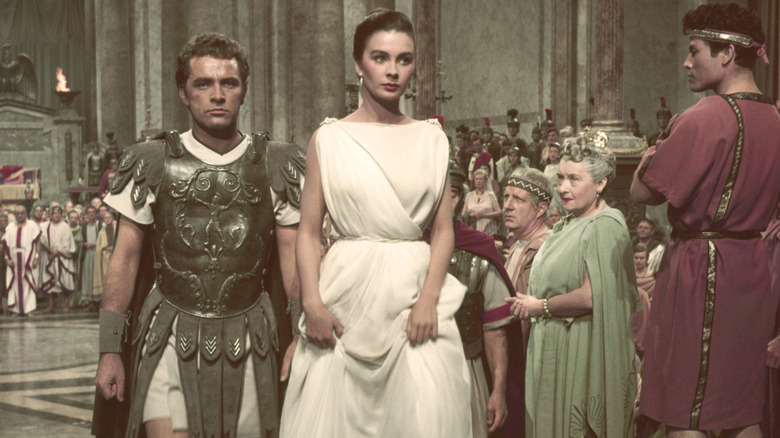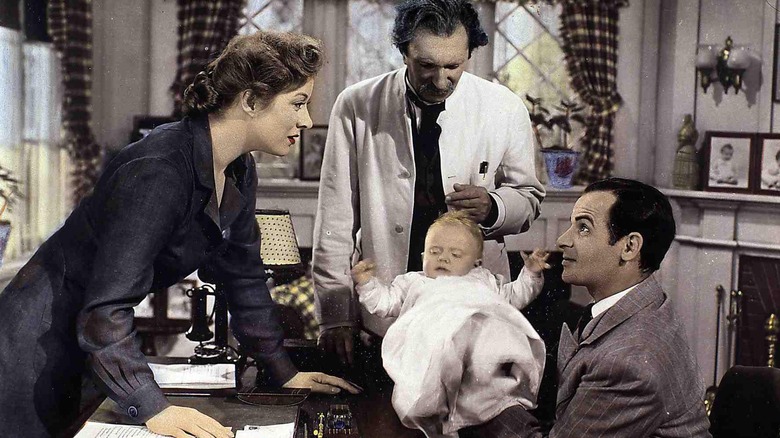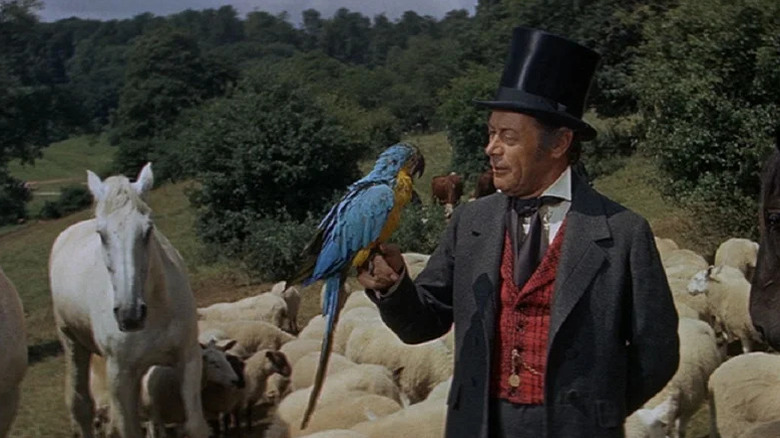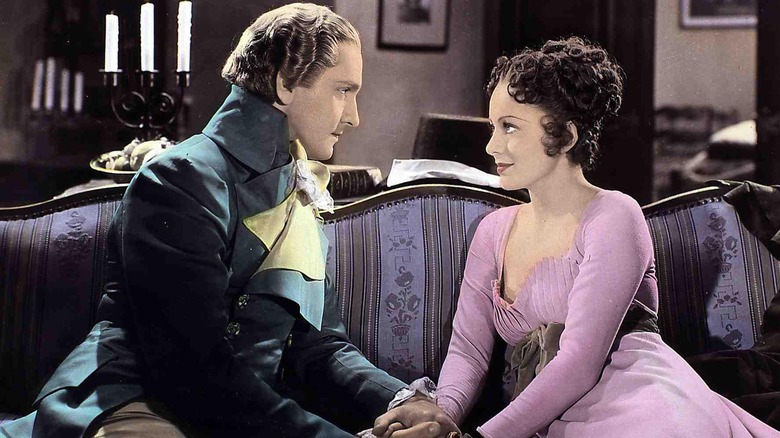The 10 Worst Oscar Best Picture Nominees, According To Rotten Tomatoes
If you want to get a feel for what cinema was like in a given year, looking at that year's best picture nominees would seem to be a good place to start. After all, only between five and 10 movies have received such a distinction annually, and since people voting work in the entertainment industry themselves, it's understandable they'd choose the cream of the crop, right?
Wrong!
It shouldn't be hard to find at least five amazing films each year, yet every so often, the Academy honors something that wasn't a hit with critics or audiences. People are quick to point out the worst Oscar best picture winners ever, like "Crash" and "Green Book," but when you expand that to nominees, you really wind up with some dreck (with a couple even taking home the big prize). For this list, we took the worst 10 films ever nominated based on their critics' Rotten Tomatoes scores. They say it's an honor just to be nominated, but with these films, nominating them was a slap in the face to every other movie that year that could've rightfully earned the spot.
10. The Greatest Show on Earth (1952) - 50%
1952's "The Greatest Show on Earth" wasn't just nominated for best picture at the Academy Awards; it took home the whole enchilada, ultimately winning in a field that included "The Quiet Man," "Moulin Rouge," "Ivanhoe," and "High Noon." It managed to do that without much in the way of plot, as the film's mostly concerned with providing a behind-the-scenes look at the Ringling Bros. and Barnum & Bailey Circus, with plenty of death-defying circus acts to go along with it.
Some might find entertainment value in watching trapeze artists and other performers show off their crafts, but that doesn't make it a good film per se, which is probably why it only holds a 50% critics' rating on Rotten Tomatoes. And time hasn't been kind to "The Greatest Show on Earth" (no pun intended). TIME Magazine listed it as one of the biggest Oscar best picture controversies of all time, seeing as it beat out "High Noon," one of the best Westerns ever. However, it's a testament to how the Academy is just as much about politics as it is about genuine artistry. This was the era of McCarthyism and the blacklisting of anyone suspected of being sympathetic toward Communist ideals. Cecil B. DeMille was about as far away from being a Communist as you can get, so he was awarded whereas "High Noon," written by Carl Foreman who was jailed for refusing to out anyone with Communist affiliations, was left high and dry.
But maybe "The Greatest Show on Earth" still has some merit. It served as a major influence on Steven Spielberg, so it's possible without it, we wouldn't have gotten "Jaws" and the rest of his filmography.
9. Extremely Loud & Incredibly Close (2011) - 44%
The most recent best picture nominee on this list is only from 2011 — "Extremely Loud & Incredibly Close." As much as people like to think cinema as a whole has gone downhill over the past few decades, there have been some relatively strong best picture fields in recent years. But then there's this overly sentimental drama about Oskar (Thomas Horn), a young boy with autism, grappling with the death of his father, Thomas (Tom Hanks), in the aftermath of September 11, 2001. The film only garnered a paltry 44% from critics on Rotten Tomatoes.
You can probably guess from the synopsis why its nomination was so controversial. There are certainly bright spots in the film, such as solid performances, but it's overly maudlin and sentimental, almost as though it's trying to manipulate viewers into crying with a backdrop set over a national tragedy. And it probably wouldn't have made the cut had it not been for the Academy's new rules, expanding the field from five to 10 nominees starting in 2009. This was done after audiences were upset "The Dark Knight" didn't get a best picture nomination, so opening the field was meant to make room for more crowd-pleasing films that nonetheless had some artistic merit. But with "Extremely Loud & Incredibly Close" getting a spot, it showed the Academy may have just been trying to cram in more Oscar bait.
Regardless, the movie is certainly the most egregious best picture nominee of the 21st century. Tom Hanks, with plenty of great films, is no stranger to the category, but this is one that probably should've stayed relegated to the Wal-Mart bargain bin.
8. Hello, Dolly! (1969) - 43%
"Hello, Dolly!" sounds like it should have all the makings of an Oscar classic. It's the final movie directed by Gene Kelly (with /Film even ranking it amongst Kelly's best films ever). It helped launch Barbra Streisand's acting career, as she plays the titular Dolly Levi, a widowed matchmaker attempting to find a suitable partner for her client. Even with all that, it still only stands with a 43% critics' score on Rotten Tomatoes.
The film certainly has its fans, which is evident from the movie's 75% rating with general audiences on the same platform. Perhaps some reviewers are a bit too cynical when appraising the movie, but it's hard not to see some patterns with many critics lambasting its bloated nature. Paul Taylor of Time Out wrote, "The Jerry Herman score is unmemorable, Michael Kidd's choreography is foreshortened to accommodate yards of additional dialogue by Ernest Lehman, and the rest is Streisand capably doing her thing in a series of plushily colossal sets."
This may simply be a matter of the film not aging well in certain circles. "Hello, Dolly!" may have lost out on best picture, but it still took home some trophies during its big ceremony for best art direction, best score of a musical picture — original or adaptation, and best sound. If musicals ever come back around to being a major force in Hollywood, maybe "Hello, Dolly!" will receive a much-needed reevaluation.
7. The Hollywood Revue (1929) - 43%
It might be a bit unfair to list something like 1929's "The Hollywood Revue" on a list of worst best picture nominees according to Rotten Tomatoes. The film does stand at only 43% on the platform, but that's only from seven professional critics' reviews total, meaning four people disliked it while three enjoyed it well enough. Then again, the audience score only stands at 18%, so even by 1929's standards, maybe this movie was a bit misplaced being in the best picture contention.
The movie's an intriguing time capsule of the era, as it's entirely a variety show filled with the biggest stars under Metro-Goldwyn-Mayer at the time. Laurel and Hardy do one of their comedy routines while Buster Keaton dances and Joan Crawford sings. It's not so much a "movie" as it is MGM showcasing all of the folks they had under contract, so it might make sense that something of this scale would've wound up being honored at the time.
The low Rotten Tomatoes score may simply be a case of contemporary critics not necessarily enjoying a musical revue over a more standard film with things like a plot. But enough publications seemed to enjoy it when it came out. The New York Times' review at the time praised its "good fun and catchy music." If you want to make up your own mind, "The Hollywood Revue" entered the public domain on January 1, 2025, so you can watch it on YouTube for free to make up your own mind.
6. Anne of the Thousand Days (1969) - 43%
Sometimes impressive performances aren't enough to save a movie that's otherwise incredibly boring. That's the case with 1969's "Anne of the Thousand Days." 1969 was a bad year for best picture nominees, huh?
The film, based on the play of the same name, follows the true story of King Henry VIII (Richard Burton) meeting, having a relationship with, and eventually separating from Anne Boleyn (Geneviève Bujold). The film scored 10 Oscar nominations, only winning for best costume design, which admittedly is one of the best parts. But none of that is enough to save the film from largely being a bore to get through, as Dave Kehr of the Chicago Reader wrote, "It's about what you'd expect — slow, dry, fleetingly intelligent."
So how did "Anne of the Thousand Days" get into consideration for best picture? It seems that it largely came down to Universal really marketing toward critics, even serving filet mignon to them after screenings. Who needs a good movie when you can bribe your way to nominations?
5. The Broadway Melody (1929) - 42%
1929's "The Broadway Melody" is often considered the worst film to ever win best picture, so it's no surprise it's also one of the worst nominees by and large. Its Tomatometer score rests at 42% with 30 reviews being counted in total, so it doesn't even have the benefit "The Hollywood Revue" has of barely having any reviews to count.
It's a good, old-fashioned musical about a pair of sisters trying to make it big on Broadway, with one of them earning the affection of bigwig Eddie (Charles King). Honestly, at the time, "The Broadway Melody" winning best picture was akin to something like "Titanic" winning, as it was the highest-grossing movie of 1929. It was fairly well-received at the time, with Variety's review stating, "'Broadway Melody' has everything a silent picture should have outside of its dialog. A basic story with some sense to it, action, excellent direction, laughs, a tear, a couple of great performances and plenty of sex."
It seems its latest distinction of being the worst best picture winner comes down to changing sensibilities. While it may have been revolutionary at the time, it's now old hat and cheesy but may still be worth a watch for anyone who wants to learn more about Hollywood's history with musicals.
4. The Robe (1953) - 38%
Biblical epics are similar to musicals in that they used to be really popular in Hollywood but have become few and far between in more recent decades. The likes of "Ben-Hur" and "The Ten Commandments" certainly still deserve study and appreciation, but then you have something like 1953's "The Robe," which only scored 38% with critics on Rotten Tomatoes.
The film follows the drunkard Marcellus Gallio (Richard Burton), who acquires Jesus Christ's robe following His crucifixion, and after it's stolen, he goes on a spiritual journey to get it back, coming around as a true believer. "The Robe" holds the distinction of being the first film shot on CinemaScope, which most audiences thought looked better with its wider aspect ratio. That's about the only thing today's critics are willing to give to "The Robe," as, like other films on this list, it's largely seen now as a relic.
Even though Burton was also nominated for best actor in his role, it's largely a weak spot. TV Guide's review of his performance calls it "very stiff in a part he considered prissy and silly." The movie as a whole is far too melodramatic for its own good, and modern audiences are probably better off watching something like 1988's "The Last Temptation of Christ."
3. Blossoms in the Dust (1941) - 33%
In the modern age, sincerity and sentimentality are hard to come by. Everything has to be meta or a joke, so that might explain why films from the '40s and '50s feel so off. Even then, some movies simply go too far with the melodrama, which is the case for 1941's "Blossoms in the Dust," which tells the true life story of Edna Gladney (Greer Garson), who founded a Texas orphanage to help more children get placed in familiar and lobbied to help adopted children maintain the same rights as kids with their biological parents.
It's a remarkable story, but the movie is drenched with moments designed to get you to cry. Think of it as a prototype of "Extremely Loud & Incredibly Close" but somehow even more saccharine. And in case you're sensing a pattern with this list, much of the disdain surrounding the movie comes from more contemporary critics.
Plenty of folks enjoyed it at the time, such as Bosley Crowther from The New York Times. His review was largely positive, but even he pointed out, "The peril of overdoing a picture of this nature requires a director's constant vigil and the application of much good taste. Unfortunately, [director Mervyn] LeRoy has let himself go a few times." A movie about orphans is naturally going to be a little sad, but "Blossoms in the Dust" simply goes overboard, which is probably why it holds a critics' rating of 33% on Rotten Tomatoes.
2. Doctor Dolittle (1967) - 29%
When "The Sound of Music" did well, many studios wanted to replicate the success, leading to enormous budgets for other musicals that failed to perform at the box office. This led to some of the biggest flops in movie history, including 1967's "Doctor Dolittle." Long before Eddie Murphy was a household name, there was this tale of the titular Dolittle (Rex Harrison) speaking to animals. Despite a scene of Harrison singing to a seal in a dress, this movie's better left forgotten, as it's only managed a 29% rating on the Tomatometer.
A big-budget musical may have garnered a best picture nomination simply because it fell into the category of movies that ordinarily should've gotten nominated. Some may enjoy its camp value, but with mostly forgettable songs, there's nothing really here to hold your attention. Critic Leonard Maltin even wrote this scathing critique: "The movie has one merit: if you have unruly children, it may put them to sleep."
Even if you like the movie (to each their own), "Dolittle" will forever have a dark cloud hanging over it due to the animal cruelty that took place during production, which resulted in the death of a giraffe. We never thought we'd say this, but maybe Robert Downey Jr.'s "Dolittle" isn't the worst thing in the world.
1. Anthony Adverse (1936) - 18%
Can you imagine a movie today with 18% on Rotten Tomatoes getting nominated for best picture? To put that into perspective, 2024's "Harold and the Purple Crayon" has a whopping 28% on the platform, which kind of gives it more merit to be amongst awards conversation than 1936's "Anthony Adverse." Granted, the film only has 11 reviews counted in total on the platform, but even when it came out, it didn't have many fans. There's probably a reason you don't really hear about it anymore.
The historical epic follows Anthony (Fredric March) as he experiences one tumultuous event after another, from being abandoned at an orphanage to losing the love of his life and going on an arduous journey to reunite with her. The movie's long and rambling, which is somewhat the point of the book it's based on, as it chronicles many of Anthony's escapades. But translated to film, it falls flat and is just generally lifeless. The New York Times published its review back in 1936 and it wasn't kind: "Altogether too much talent to be wasted through a pointless script and unimaginative direction."
Creating a list of the worst best picture nominees according to Rotten Tomatoes may be a tad unfair to an extent. Some movies need to be viewed through the proper context to understand why they received a nomination at the time even though they seem pretty bad by today's standards. But "Anthony Adverse" probably isn't worth any extra nuance.
